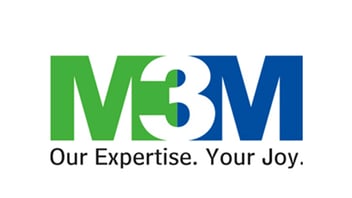Gurugram (Gurgaon), INDIA, September 01, 2017 – M3M India was looking for a long-term technology...

Clients increasingly require 'Extranet expertise'.
Independent research commissioned by the Network for Construction Collaboration Technology Providers (NCCTP) shows that 74% of clients increasingly favour contractors with experience of using web-based collaboration systems - or 'project extranets' - to deliver construction projects. The 'Proving Collaboration Pays' study, carried out by Benchmark Research, also found project teams welcome the greater control over their projects that collaboration technologies gave them.
The NCCTP/Benchmark study focused on the attitudes and experiences of 272 UK-based staff, from 195 different companies, making it the biggest survey ever conducted into the use of online construction collaboration systems.
In the survey, 96% of those interviewed said they had experienced benefits from using collaboration technologies. Several advantages were seen as substantial by over 80% of users including:
- round-the-clock online availability of documents, drawings and other project data
- holding all project data in a single central repository
- reduced expenditure on couriers or post
- less chance of losing important documents or drawings
- improved audit trail
Average drawing approval times were reduced by 26%, from an average of 9.3 days to 6.9 days.
"The NCCTP felt the UK construction industry needed independent verification of the claims that vendors make regarding the benefits of their various collaboration systems," says BIW's Paul Wilkinson, chairman of the NCCTP market research steering group and author of book on the subject. "The NCCTP/Benchmark survey substantiates those claims. It has also revealed that construction collaboration experience is becoming a key area of competitive differentiation, and that 'extranets' have achieved significant traction: a high proportion of users - 60% - want to use the technologies on most or all future projects."
Research background
In late 2005, the NCCTP commissioned an independent survey of users of its members' collaboration systems - or 'project extranets'. The research was undertaken by Benchmark Research, a market research agency with extensive experience in both IT and construction-related markets in the UK.
During April and May 2006, Benchmark conducted 272 telephone interviews with individual users of UK solutions from 4Projects, Aconex, Asite, BIW Technologies, Business Collaborator, Cadweb, Causeway Technologies and Sarcophagus. Interviewees were drawn from 195 different companies and comprised roughly one quarter each of designers (architects, civil engineers, etc), main contractors and sub-contractors, with the remaining quarter made up of client representatives and quantity surveyors. Over 60 per cent of interviewees had used collaboration technologies on multiple projects.
High levels of commitment
Benchmark asked users how likely they would be to recommend the technologies, how likely they would be to use them again, how they rated the systems' overall performance, and asked for their attitudes to the technologies. Analysis of the responses on these questions helped Benchmark establish the sample's overall commitment or loyalty to the technology.
More than half of the respondents were loyal or strongly loyal, while less than 5% were unconvinced or disillusioned. Benchmark divided the sample into five groups:
- Loyal advocates (committed evangelisers) - 16%
- Loyal (strongly committed to using the technology in future) - 36%
- Satisfied but uncommitted - 44%
- Unconvinced - 3%
- Disillusioned - 1%
Of the first two groups, 62% were QSs, 59% were clients and 58% were main contractors. Just over half (51%) of designers featured in these groups, and 39% of sub-contractors. "This is strong commitment to a technology that only really emerged five or six years ago," says Wilkinson. "We clearly need to convert some of the 'satisfied but uncommitted' group so that future use of the system increasingly becomes an automatic decision. In particular, the survey suggests we need to do more to overcome designers' and sub-contractors' reservations about the systems."
Key benefits
Despite the variations in loyalty among the sample, there was widespread acceptance of the practical benefits of construction collaboration technologies.
1. Better communications, faster drawing approvals
Sixty-one per cent of the sample rated better communications between project team members as a substantial benefit. When asked to compare how long it took to approve drawings exchanged via a collaboration solution as against those exchanged by email or other means, survey respondents said average drawing approval times were reduced by 26%, from average of 9.3 days to 6.9 days.
2. Improved accountability
Creating a single, secure repository for the exchange of drawings and other documents improved project team accountability, the survey said. The following were all rated as substantial benefits (ie: rated 4 out of 5 or above):
- Audit trail (rated a substantial benefit by 81%)
- Traceability and visibility of documents (79%)
- Better accountability (73%)
- Less confusion over which version is correct (69%)
- Everybody works from the same version (68%)
3. Better project management
The survey found users experienced significant benefits relating to project management, communications and team working:
- Information available centrally (rated a substantial benefit by 85%)
- Less money spent on couriers or post (83%)
- Dispersed teams work better together (68%)
4. Improved document control
Similarly, respondents said they benefited from improved document management, storage and retrieval processes
- Less chance of losing important documents (rated a substantial benefit by 82%)
- Information is more secure (75%)
- Distribution and production costs are less (74%)
- Archived information can be found faster (72%)
- Needs less storage space (70%)
- Easier to find/retrieve right document (66%)
5. Benefits to owner/operators
Benefits experienced relating to hand-over, commissioning and operation and maintenance included:
- Documents can be accessed 24/7 (rated a substantial benefit by 86%)
- Archive of health and safety information (66%)
- Archive of FM information (64%)
- Costs less to maintain documents (61%)
- Documents amended faster and more easily (60%)
6. Competitive differentiation
Construction industry clients within the sample were asked for their opinions regarding collaboration technologies. Almost three-quarters (74%) said they were more likely to award contracts to firms experienced in using collaboration technologies, and over two-thirds (68%) said they would insist on using such systems on all future projects.
Such client attitudes are clearly familiar to many professionals within project teams. Four out of five non-clients (81%) agreed that an increasing number of larger clients insisted on using the technologies, two-thirds felt expertise in their use gave them a competitive edge in winning contracts, and 54% said they would not be able to compete for certain jobs without using the systems.
Both clients and project team members agreed that collaboration technologies gave them greater control over their projects (clients 82%, non-clients 69%).
"Throughout the survey, it is noticeable that time and cost savings aren't ranked as the most important areas of differentiation," says Wilkinson. "While savings are being made, the key perceived benefits relate to better control, communication and collaboration processes."
Disadvantages/barriers to collaboration
The 'Proving Collaboration Pays' report also discusses user perceptions regarding the obstacles to be overcome in successfully introducing and using the technologies. The potential barriers noted most frequently by the survey's respondents were:
- Hard to get everyone to agree to make full use of it (73% agreed)
- Some system processes are very time-consuming (73%, but 82% among designers)
- Takes a while to set up (67%, but 86% among main contractors)
- Need training on different systems for different projects (67% - 77% of designers agreed)
- Easier communications encourage more changes (60%)
Only a small minority (14%) expressed reservations about the systems being too transparent.
While 53% of the sample felt poor levels of IT literacy in the construction industry were a problem, this figure grew to 64% and 65% among sub-contractors and main contractors. Designers were more likely to complain that the systems reduced personal contact, and to say that the systems created more work (having to do the same job twice).
"We regularly say that successful collaboration results from effectively combining people, processes and technologies: it's 80% people and processes, and 20% technology," says Wilkinson. "The research confirmed our view, with most of the identified barriers relating to implementation and education/training issues. NCCTP members will be looking carefully at how they can help their users overcome these barriers - again, it appears we need to work more closely with the design team members."
High levels of user satisfaction
Users tended to be highly satisfied with the reliability of the systems. 73% rated reliability at 4 or 5 out of 5; only 9% rated reliability at 1 or 2 out of 5. Vendors' support services were highly rated by 62% of the sample, while ease of use, learning curve and functionality also tended to be rated highly, by 58%, 58% and 55% respectively. Speed of upload/download of information was criticised by some; 23% gave this 1 or 2 out of 5, though - as Benchmark point out - the apparent speed of the system will be dependent to a significant degree on the IT infrastructure of the end-user.
Comparisons with other research
The NCCTP/Benchmark survey was undertaken shortly after publication of an influential study by academics in the Graduate Design School at Harvard University in the USA (while mainly focused on USA-based systems, it included projects from UK vendor Business Collaborator). While the Harvard study was more qualitative, it did investigate users' perceptions of the benefits of online collaboration, and there was significant overlap in relation to eight areas of benefit. Both surveys delivered very similar rankings, with audit-trail related benefits and the ability to find/access data swiftly both given very high scores.
Report available online
The full 44-page NCCTP/Benchmark report, entitled 'Proving Collaboration Pays', is available for download in PDF format from the NCCTP website (www.ncctp.net).
Asite Insights in your inbox.
Sign up for product news and our latest insights published monthly. It's a newsletter so hot, even global warming can't keep up.


